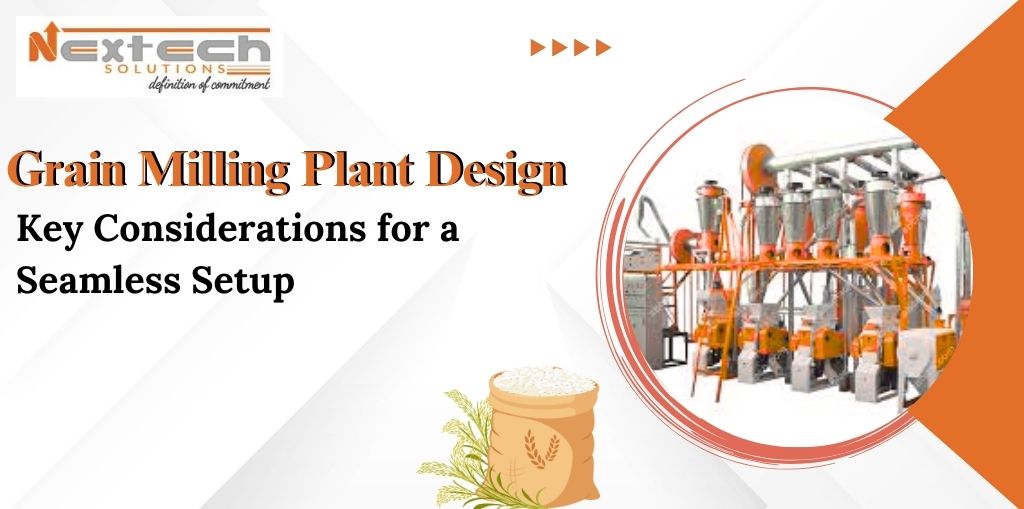Establishing a grain milling plant is a major investment that calls for deliberate planning and professional implementation. Whether you’re concentrating on rice, wheat, or pulses, a well-planned milling plant can contribute significantly to operational efficiency, product quality, and profitability. In this article, we discuss the critical factors to think about when designing a grain milling plant for a smooth and sustainable setup.
Understanding the Scope of Your Milling Project
Defining the scope of the project is crucial before embarking on technical design. This involves:
Type of Grain: Will you be processing rice, wheat, maize, or a mix?
Scale of Operation: Are you aiming for small-scale, medium, or an industrial-scale facility?
Target Market: Knowing your end-user needs assists in planning processing capacity and packaging.
Understanding these factors will inform all other decisions in plant design and see to it that the ultimate arrangement satisfies both production and market needs.
Site Selection and Layout Planning
Selecting an appropriate location for your plant is essential. A well-chosen site lowers transportation expenses, simplifies logistics, and guarantees reliable power and water supply.
Some of the key factors are:
Proximity to raw materials: Being near rice paddies or grain sources reduces transport times.
Accessibility: Convenient access to roads, highways, and ports if you will be exporting.
Space and Expansion: Design for future expansion by choosing a location that will accommodate layout expansion without interfering with ongoing operations.
Customized Plant Design and Engineering
The heart of any successful grain milling solutions venture is its customized design. It’s crucial to make the layout tailored to your production requirements, automation level, and budget.
Important design factors to keep in mind:
Material Flow: Provide a clean and logical material flow from intake to packaging.
Energy Efficiency: Invest in machines that provide high output with low energy usage.
Hygiene and Safety: The design should facilitate easy cleaning, dust suppression, and safe working spaces.
Automation Level: Determine the level of plant operations to be automated according to your manpower and budget.
Collaborating with veteran consultants such as Nextech Agri Solutions can assist in bringing your design in line with international standards while accounting for regional limitations.
Technology and Equipment Selection
Equipment is perhaps one of the most critical elements of any grain milling installation. Selecting the proper equipment ensures not only high-quality produce but also long-term dependability and cost-effectiveness.
Minimum requirements are:
- Pre-cleaners and Destoners
- Milling Machines (Rubber Roll Sheller, Whitener, etc.)
- Grading and Sorting Units
- Color Sorters
- Packaging Systems
It is also important to procure these machines from well-known manufacturers who provide robust after-sales support and service.
Compliance and Regulatory Requirements
Ensure your plant complies with all national and local regulations before you start operations.
This includes:
- FSSAI (Food Safety and Standards Authority of India) Licensing
- Environmental Clearances
- Pollution Control Norms
- Labour Law Compliance
Being compliant not only keeps you in legal limits but also improves your brand reputation and customer trust.
Manpower and Training
Even the most technologically sophisticated plants need skilled manpower. Training operators pays for itself by making the equipment operate more efficiently and keeping product losses to a minimum.
Training should encompass:
- Equipment running and maintenance
- Quality control procedures
- Safety procedures
- General troubleshooting
Recurring training sessions assist in enhancing productivity and decreasing downtime.
Cost Estimation and Budget Planning
Cost is usually the largest item in any milling installation. The budget must not only provide for machinery and construction but also:
- Installation and Commissioning
- Utility Connections (power, water, waste management)
- Initial Raw Material Procurement
- Marketing and Branding
A clear financial plan helps avoid unexpected expenses and keeps the project on track.
Post-Installation Support and Maintenance
After setup, the focus should shift to plant optimization and long-term maintenance. Regular audits, machine servicing, and performance monitoring help maintain efficiency and prolong equipment lifespan.
Reliable support systems and accessible spare parts reduce operational disruptions and improve overall plant uptime.
Conclusion
Creating a successful grain milling plant involves more than machinery and drawings. From choosing the right location and tailored layouts to compliance and qualified manpower, every step contributes to long-term success. For those who operate rice mills in India or developing an integrated rice mill project, bringing all these elements together mindfully guarantees operational excellence and competitiveness in the marketplace.
Proven partners such as Nextech Agri Solutions offer years of experience and technical know-how to optimize the whole process—ensuring smooth business transition from concept to commissioning with the appropriate grain milling solutions.
 MAIL US :
MAIL US :
 CALL US :
>
CALL US :
>
